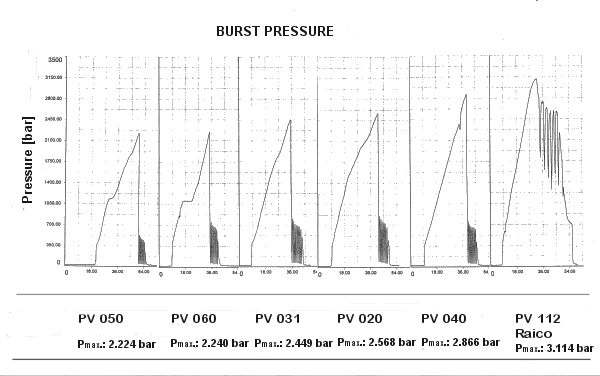
burst pressure
Testing Conditions: The test is performed individually for each test sample. The sample is mounted in the test bench. Subsequently the pressure is gradually increased until the sample is destroyed which causes the pressure to drop suddenly. On most of the test sample the failure occurs in consequence to the elongation of the thread stud which causes the sealing surface on the shoulder to lift off contact.
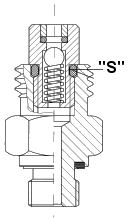
An exception are for instance, the models similar to the one here shown. On these designs the burst pressure is already reached at 1000 bar. The weak spot here is the wall thickness “s”. It can not withstand higher loads and fractures. ( For this kind of models the allowed operating pressure may not exceed 300 bar.
The remaining burst tests were also performed on samples with mounting thread BSP (G) ¼” and shoulder sided sealing, whereby different versions thereof were tested.
All other samples show a considerably higher burst pressure, the most in excess of 2000 bar. The weak spot is generally the stud of the mounting thread which, due to the sealing on its shoulder, with the relatively large effective area, is subjected to a high tension force and elongation until the seal lifts off.

At repetition of this test after simply replacing the shoulder seal, the burst pressure decreases with each test due to the progressive fatigue of to material.
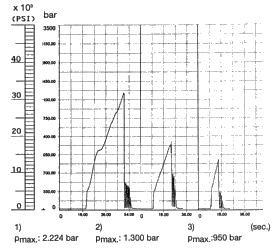
The burst tests are also suitable to demonstrate the disadvantage of a currently “fashionable” flat seal, used by some manufacturers in substitution of the proven O-Ring as the thread seal.
For the mounting thread BSP (G) ¼” this innovation requires the increase of the seal groove outside diameter from 16 mm to 16,6 mm. Thereby the pressure effected area is made larger ( by the square of the radius ) while at the same time the critical wall thickness is reduced. . Depending on the material used ( mostly free cutting steel ) the part will break or permanently deform, right there, causing the seal to rupture ( as shown on the photo ).
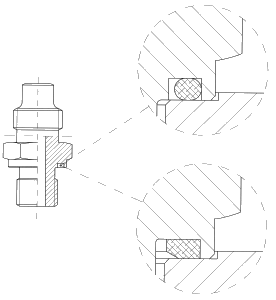

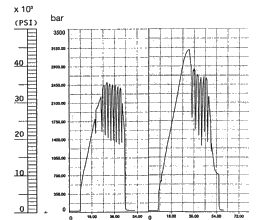
The weak spot on the special flat seal can also be demonstrated when the original seal groove ( O.D. 16 mm ) is alternatively fitted with an O- Ring and a Flat Seal and the coupler is subjected to the burst pressure test: 3.100 bar burst pressure is reach when using an O-Ring whereas the sudden loss of pressure occurs already at 2.500 bar with the Flat Seal.
RAICO’s design is provided with the standard O-Ring, dia. 1,78 x 12,42 / 15,98 - 70 Shore and reaches the burst pressure of 3.114 bar.
